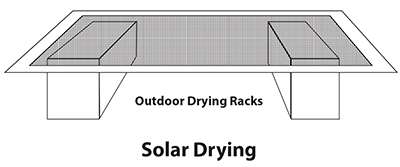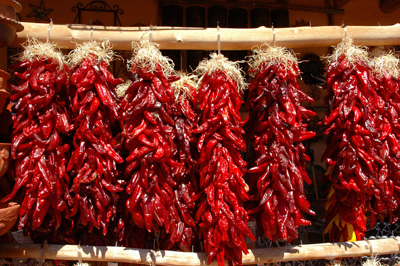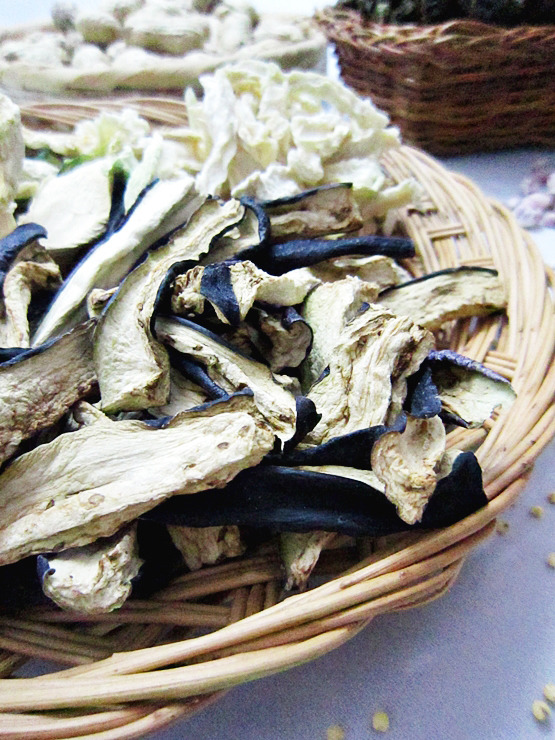
August and September provide the peak-season harvest when it comes to fresh produce purchased from your local farmer! The sheer variety of juicy peaches, crisp cucumbers, colorful squash, milky corn, luscious tomatoes, and more are unrivaled during late spring and into fall. Now is the time to buy in bulk and preserve the harvest, so you can enjoy the flavors of summer well into winter and save money while you’re at it. Dehydrating is one of the easiest and most economical ways to store food. (Read about more food preservation methods in Preserve the Harvest With These Five Simple Techniques.)

Dehydrating fruits and vegetables can be accomplished by the sun, your oven, or a dehydrator. (Photo credit: NMSU)
Dehydration involves removing water from fruits and vegetables so they do not spoil; air passing over the produce is at a low enough temperature to prevent changes in cell structure, so the fruits and vegetables retain their full nutritional value.
There are several benefits to dehydrating produce for storage:
- It’s economical: While you can purchase equipment to make dehydrating easier, you can also dehydrate food successfully using what you already have in your kitchen. Plus, in-season produce is cheaper than buying it fresh, out-of-season; preserving it now keeps money in your pocket later.
- The food lasts: Dehydrated produce can be stored for thousands of years, and eaten safely! It is the oldest method of food preservation in the world.
- Storage space is minimized: Since dehydrated vegetables shrink, you can store a lot of dehydrated food in a small amount of space, especially when compared to other food preservation methods.
- Storage is easy: No additional refrigeration is needed to store your dried produce. Simply place your dehydrated fruits and vegetables in an air-tight container and store in a dry, dark location, like a cupboard, until ready to use.
- Nutrition is retained: Dehydration is gentle and protects the integrity of the fruit and vegetables’ cell walls. The low-heat processing temperatures mean the vitamins and minerals retain their viability.
- Food flavor is enhanced: Because you’re removing the moisture from fruits and vegetables, all of the flavors become concentrated and magnified. This makes for some delicious snacks! (Watch out, though! In the case of fruits, that means the sugars, and the calories in them, are preserved, too!)
- Cooking dehydrated food is easy: Fruits and vegetables can be eaten in their dried state, but they can also be rehydrated and cooked. Cover fruits with boiling water, let sit for five minutes, then drain (save the water for making soups and stews, to save the vitamins and minerals in the water). Rehydrate vegetables by soaking them in twice as much hot water as volume of vegetable (so, if you have one cup of dehydrated vegetables, rehydrate with two cups of hot water). Of course, you can also toss dehydrated produce directly into soups and stews while cooking.
Read on for four reliable ways to dehydrate the harvest:
SOLAR DRYING
In sunny, dry New Mexico, solar drying is a natural choice for drying fruits and vegetables. Dry your produce on a hot day (above 85F) with a nice breeze, which carries moisture away from the drying food. You will need to bring your produce inside at night to prevent evening condensation from ruining your dehydration.

A simple outdoor drying rack. (Photo credit)
Fruits and vegetables are solar dried on drying trays, which can be as simple as stainless steel screening attached to a wood frame (a good size is 14 in. × 24 in. × 1 in). Be sure to elevate the tray above the table or surface on which you are drying to maximize air flow, and cover your trays with thin muslin or cheesecloth to keep out insects. Place the trays in a full-sun location, moving the trays if necessary to make sure they receive maximum sun exposure during their entire drying time.

Chiles and herbs are especially well-suited to air drying.
AIR DRYING
New Mexican ristras are an excellent example of air drying. Air drying is similar to solar drying, except it occurs indoors. Air drying is especially good for chiles, herbs, apples, and even mushrooms. The produce or herbs are simply strung on a string or bundled in a fashion that can be hung, then the bundles are hung in rooms with good ventilation. You can cover the bundles with muslin to protect them from insects or other unwelcome visitors.
OVEN DRYING

Tomatoes can be solar dried, but dry reliably well in the oven or an electric dehydrator. (Photo credit)
Oven drying is easy, and the only disadvantage is that you can’t use your oven for cooking while you are dehydrating food, which can take a long time. To oven-dry, cover your oven racks with thin muslin or cheesecloth to prevent the produce from falling through the oven rack as your food shrinks while drying. You can also use a cookie sheet with a cooling rack on it; the food must always have good air ventilation all around it.
Heat your oven to between 140F and 150F, or your lowest setting if your oven doesn’t go that low (you don’t want to cook the food with temperatures that are too high). Lay your prepared produce on your racks, and place in the oven. Crack your oven door about an inch (keep it propped open with a wooden spoon) and keep an eye on your produce until dried. Be sure to rotate your trays for even dehydration.
DRYING WITH AN ELECTRIC DEHYDRATOR
Drying your food with an electric food dehydrator is the most expensive option for dehydrating fruits and vegetables because you need to buy a dedicated dehydrator, but it is also very convenient. You simply prepare your produce, place it in the dehydrator, turn it on, and walk away.
When buying a dehydrator, be sure to select one that has a thermostat so you can regulate the drying temperature, and a fan for air circulation. Follow the manufacturer’s manual for specific instructions for dehydrating your produce.
DRYING TIMES
Dehydrating is not an exact science when it comes to drying times and they can vary widely depending upon the method used and the thickness of your fruits and vegetables. Vegetables can take 4 to 12 hours to dry, and fruits 6 to 20, but if pieces are large or whole (as in the case of grapes to dry into raisins), dehydration can take days or even weeks.
How do you know if your fruits and vegetables are dehydrated? Fruits should be pliable and leathery, like a raisin. For vegetables, you want them to be brittle and crisp, though there are exceptions to this such as tomatoes (which is technically a fruit), which can remain leathery when dehydrated.
(NOTE: For complete instructions on preparing foods for dehydration, and dehydrating meats, read Drying Foods from the New Mexico State University Extension Service.)

Almost any vegetable, from tomatoes to eggplant, can be dehydrated now for use later.
By, Christina Keibler
SaveSave


Hi my name is Rebecca Luna I have never Dehydrate anything in my life, I have table top oven with a Dehydrate cycle and want too know if I can Dehydrate fresh fruit, and vegetables and how do I store them?
Hi Rebecca, thanks for reading and good luck on your food dehydrating! Here is an article about storing dehydrated foods: https://www.thepurposefulpantry.com/how-to-store-dehydrated-foods/